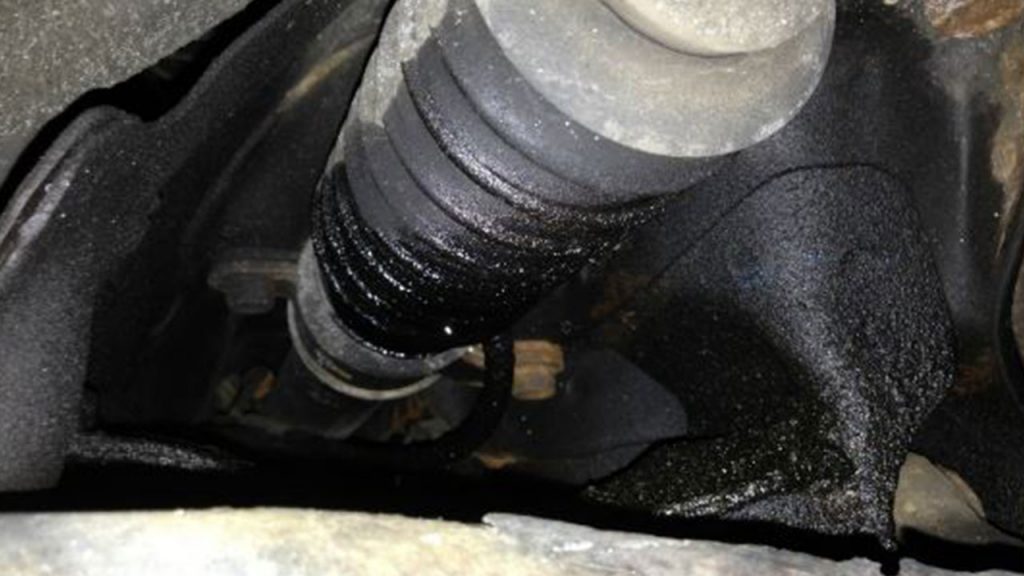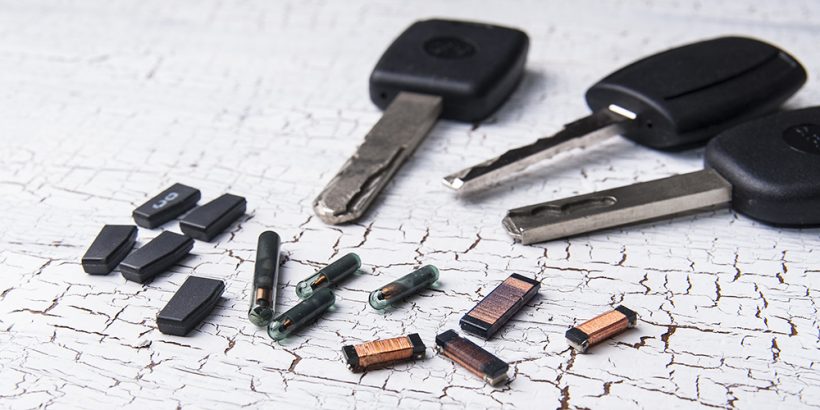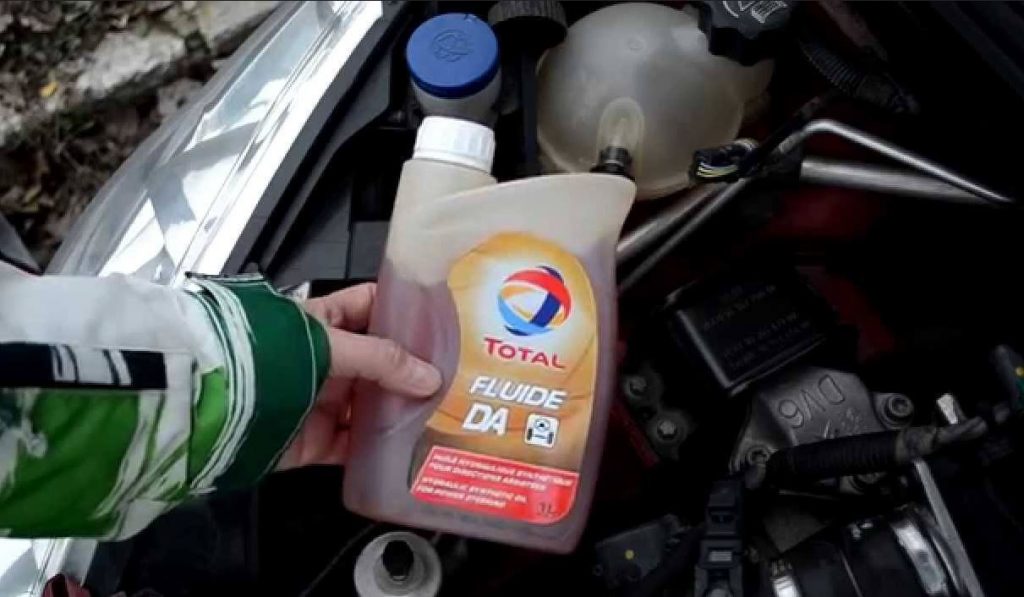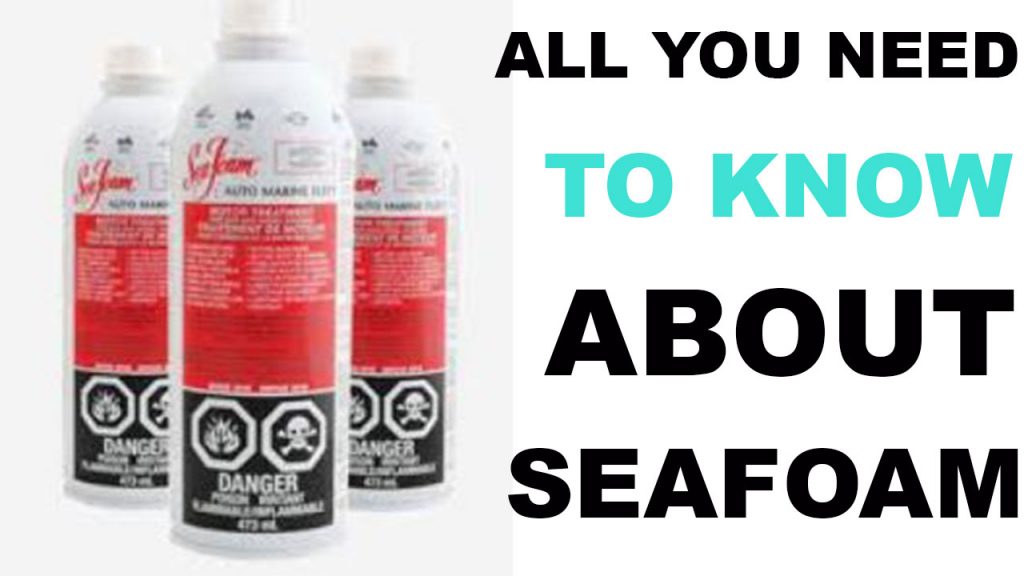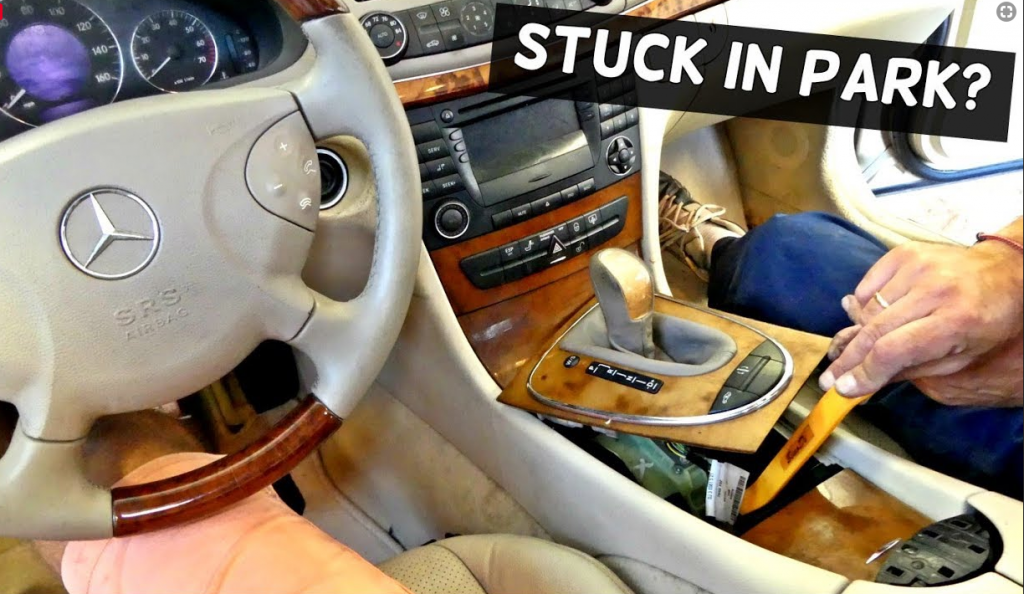Learn how to spot and avoid common auto repair scams, including unnecessary services and overpriced parts.
Auto repair scams never to fall for: As someone who has been in the Auto industry for many years, I’ve seen how mechanics take advantage of people who don’t fully understand their car needs with overpriced services, fear, fake fixes, and sneaky upsells to drain your wallet. In Today’s post, I will be exposing 24 common scams mechanics use to exploit car owners and how you can spot and avoid all these shady Car Repair Scams
And make sure you stick around to the end, because I’ll also share my number one rule to make sure you never get scammed or fall for any of the mechanics and auto shop scams, ever again. Learn how to spot and avoid common auto repair scams, including unnecessary services and overpriced parts.. Now, let’s dive in.
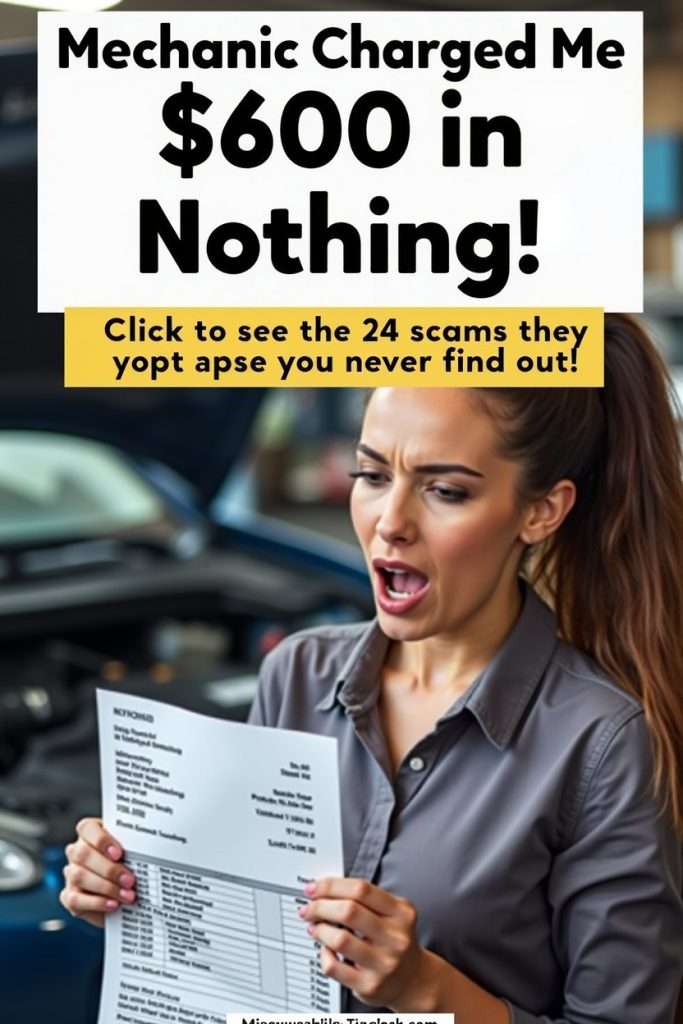
24 Mechanic SCAMS Everyone Falls For (Auto Repair Scams/fraud )
Scam number 24, the sudden, urgent fluid flush.
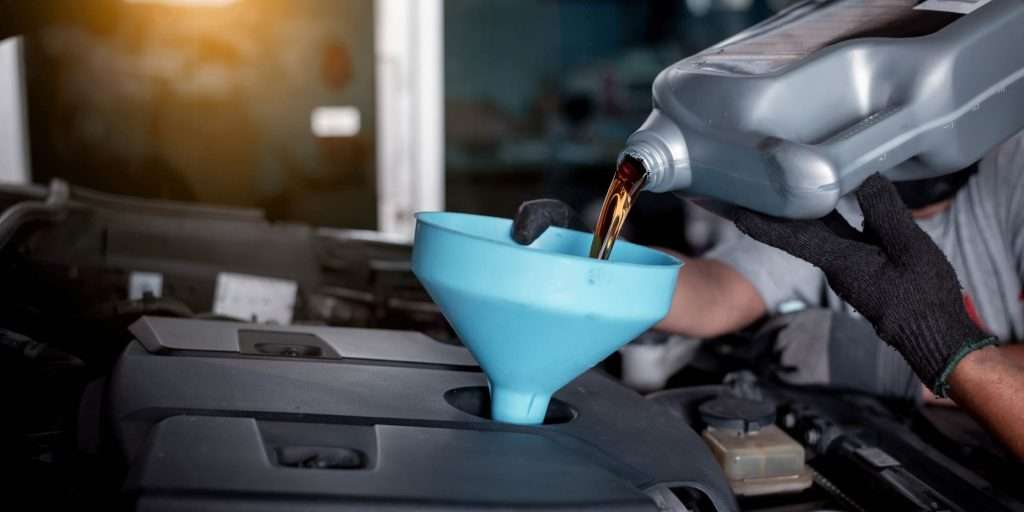
Coming up top of the list is Scam number 24, the sudden urgent fluid flush. Have you ever heard a mechanic tell you? Your coolant looks terrible, and you will need a flush. Well, the thing is, 85% of the time, you don’t need a flush.
And here is why this is a pure auto repair scam. Most fluids last 50,000 to 100,000 miles, and if you keep track of your mileage, you will know it has barely scratched the surface, but shops often push flushes way earlier, sometimes at just 30,000 miles. Why? Because it’s easy money for them. And many drivers fall for this. They’ll show you a dirty sample, but it might not even be from your car.
Always ask for proof. A simple test strip or lab report can show if your fluid is actually bad. No proof? Walk away and don’t let them scare you with words like sludge or contamination. Most fluids are designed to last. If your car’s manual says you’re good for another 20,000 miles, trust it. Not the mechanic’s upsell.
Remember, a flush might cost 100 to $300, but skipping an unnecessary one saves you cash and keeps your car running just fine. Don’t let fear drain your wallet.
auto shop scams number 23, The Customer Lockout Trick.
You go in for an alignment or inspection, but the shop refuses to release your car unless you approve expensive repairs, claiming it’s “unsafe to drive.”
That’s not just a scam, it borders on criminal. Please don’t fail for this. One viewer called the cops, and the shop was charged with attempted theft. You have every right to take your car elsewhere. If a mechanic tries to hold your car hostage, document everything, call law enforcement, and get out of there.
Scam number 22, unnecessary air filter replacements.
Mechanics love this one. They’ll pull out a filter caked with dirt and dead bugs and say, Look how bad yours is. But wait, is that your filter or one they keep in the back to scare customers? Here’s the kicker. Most air filters last 15,000 to 30,000 miles. Unless you’re driving through a dust storm daily, yours is probably fine.
And one in four drivers fall for this and are tricked into flushing and replacing theirs too early. Wanna shut this down? Pop the hood yourself. The air filter’s right here. If it looks like this, tell them to stop the nonsense. Is it dirty? Buy a filter online and swap it in 30 seconds. Pro tip: Snap a photo of your filter before the inspection. Catch them red-handed if they try the swap.
Scam number 21. The Nonexistent Part Scam.
One viewer was told her cabin air filter was filthy, only to find out her car didn’t even have one. This scam is especially common with air filters, bulbs, or components hidden from plain view.
Always verify what parts your car has using your manual or a quick search. Take photos or mark the parts you install yourself. If a shop tries to upsell something your car doesn’t even use, walk.
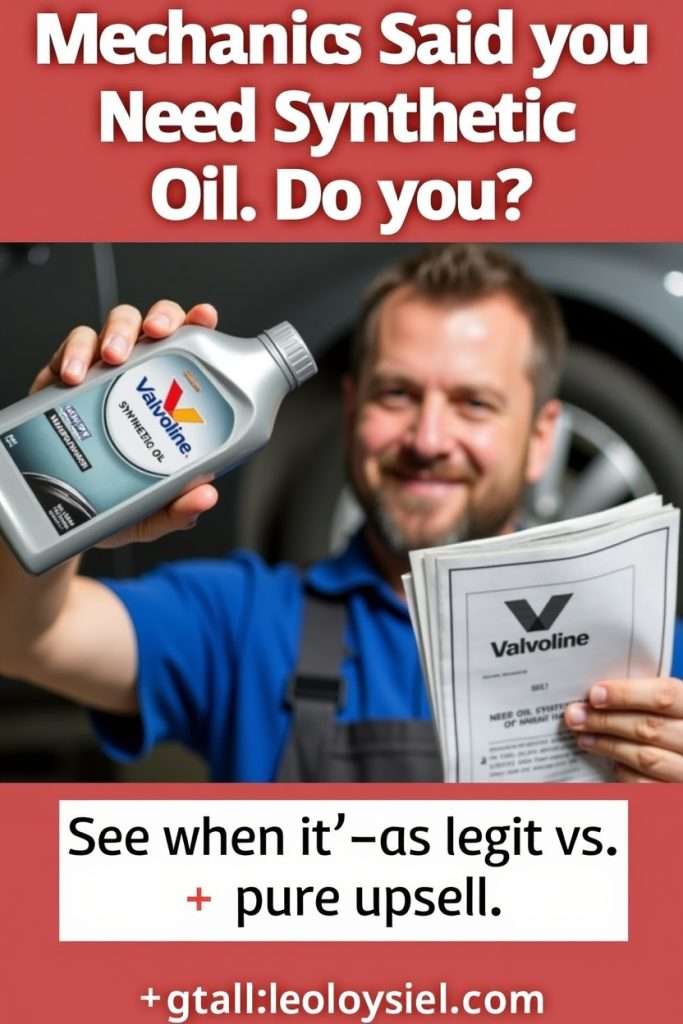
mechanic scams number 20. fake factory-only parts.
They’ll say you need factory parts. Aftermarket ones will void your warranty. But that’s a myth. Let’s clear this up. OEM parts—original equipment manufacturer—are made by the company that supplied your car’s maker. They’re identical to what your car came with, but here’s the problem.
Dealers charge two to three times more for them. An $80 aftermarket alternator becomes $200 just because it has the car brand’s logo. The National Automotive Parts Association did a study: 89% of aftermarket parts performed just as well as OEM, and they’re 30 to 60% cheaper. Unless your warranty explicitly requires OEM parts, like some Mercedes or high-end cars, which is rare, you are throwing money away.
For example, a Honda Civic oxygen sensor costs $250 for OEM and $75 aftermarket. Both pass emissions tests. Both last years. The difference? Your mechanic’s profit margin. Always ask, is there a quality aftermarket option? And check your warranty paperwork. It likely says “genuine or equivalent.” Don’t let them upsell you on the brand name.
Scam number 19. The Fake Flush Fix.
Is your A C blowing warm air? Some shops will claim you need a radiator flush, like one user who paid $595 only to find out the real problem was a $30 blend door issue.
Flushing your radiator or brake fluid won’t fix a faulty sensor, stuck door, or blocked vent. Always ask: “Is this fluid service directly connected to the issue I came in for?” If they can’t explain the link, don’t pay.
Scam number 18, the phantom repair. This one’s infuriating.
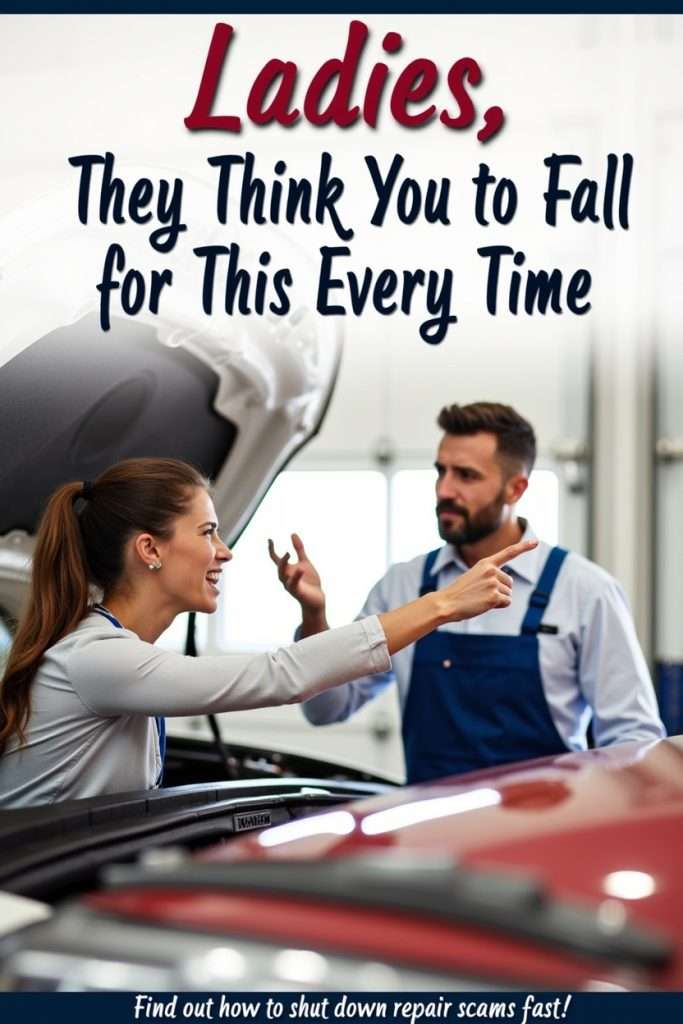
You pay for a new fuel pump or transmission flush, only to later discover it never happened. The Federal Trade Commission reports that $20 billion is lost yearly to auto repair fraud, and phantom repairs are a huge chunk of that. How does it work? They’ll claim they replaced a part or performed a service, but your car never actually got it.
A friend of mine paid $600 for a timing belt replacement only to find out after a second inspection that the original cracked belt was still there. Protect yourself. Always ask to see the old parts they removed. No leftovers? Red flag. Request before-and-after photos of the repair. Any reputable shop will provide them. If they refuse, take your business elsewhere.
Check your invoice closely. Look for vague terms like “adjusted components” or “system service.” Demand specifics. If they can’t detail the work, dispute the charge. Your bank or credit card company will back you up.
Scam number 17. The Hidden “Shop Supplies” Fee.
You’re billed $30 to $45 for vague “shop supplies.” They’ll tell you it’s for rags, brake cleaner, nuts, or sprays, but rarely explain what was actually used on your car.
Here’s the trick: you’re being charged for a full can of cleaner when they used one quick spray, or for rags they reuse all day. That fee is pure profit. Always ask for a breakdown. If they can’t itemize it, challenge it, or walk away.
mechanic scams number 16. The mystery check engine light.
This little light terrifies drivers, and mechanics know it. They’ll tell you it is serious and could cost up to $1,000 or moreto fix, but the truth is.
Up to 10% of check engine lights are triggered by minor issues according EPA. Like a loose gas cap or clogged sensor. The problem, most of us don’t know how to read the codes. That’s where they get you. They throw around terms like oxygen sensor failure or catalytic converter issue to make it sound complicated, but you don’t need to be an expert.
Here’s a simple fix. Buy a $20 OBD two scanner. I will link one in the description box below for you. Plug it into your car’s port. Usually under the steering wheel, and it’ll give you the exact error code. Google the code, and you’ll know if it’s a big deal or just a quick fix. For instance, code P0455 is a loose or faulty gas cap.
Tighten it or replace it for $15. Code P0171. A system too lean is often a dirty air filter or a small vacuum leak. and Code P0420, catalytic converter efficiency below threshold, and sometimes just a bad oxygen sensor.
Scam number 15. The Isolated Customer Scam.
Shops and dealerships love to keep you out of the garage, citing insurance or liability. But here’s what they don’t want you to see, your parts weren’t replaced, or the “dirty” air filter isn’t even yours.
If you’re blocked from seeing your car, insist on before-and-after photos. Better yet, mark your filters or parts with a Sharpie before going in. One viewer engraved her initials on the filter and caught a dealer red-handed.
Scam number 14, upselling synthetic oil.
You bring your car in, and suddenly the mechanic insists your car needs synthetic oil. It’s better for the engine. Sounds convincing, right? But here’s what they’re not telling you. 75% of cars run perfectly fine on conventional oil, according to Consumer Reports.
Synthetic oil is great for high-performance engines or extreme temperatures, but if your owner’s manual doesn’t specifically require it, you are wasting money. Synthetic costs twice as much as conventional, and guess what? Your car won’t run any better or last longer just because you paid extra.
Mechanics push synthetic because it’s pure profit for them. They’ll say things like it reduces wear, or your engine’s noisy without it, but unless you’re driving a sports car or towing heavy loads, stick with what your manual recommends. Still unsure? Check your oil cap or manual. If it says 5W-30 conventional or similar, that’s your answer.
Don’t fall for the upgrade pitch during routine changes. Save your cash for repairs that actually matter.

Scam number 13, the brake pads scare.
Ever been told your brake pads are dangerously thin or at 10% life? This scare tactic works because brakes feel urgent, but mechanics often exaggerate to rush you into replacements.
Brake pads don’t need replacing until they’re worn down to three millimeter thickness. Most shops though, will push it at five millimeters or higher. The National Highway Traffic Safety Administration says pads below three millimeters risk damaging rotors. But above that, you’re safe. Here’s what to do.
Ask to see the measurement. An honest mechanic will show you with a caliper gauge. If they refuse or say, trust me, that’s pure red flags. Check your owner’s manual. Too many cars have wear indicators that squeak when pads are actually low. Never let them fix brakes without your approval.
One customer told me a shop replaced his pads and rotors for $400 only to learn later they were still at four millimeters. Don’t let fear override logic. Tip: Brake jobs are pricey. Always get a second opinion if they claim it’s urgent. A $50 inspection elsewhere could save you hundreds. But if you’re eventually going to replace them all at once, go ahead. It’s inevitable. Yes, it might feel like a bit of a hit, but at least you did it after avoiding a scam.
auto repair scam number 12. The Female-Targeted Quote Inflation.
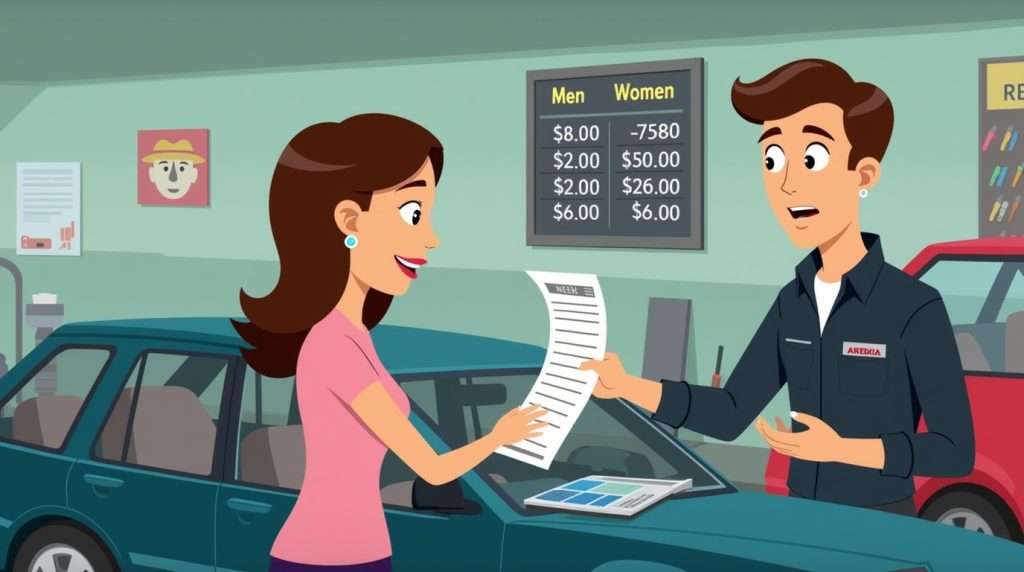
Many women report being quoted double or triple for basic services, or pushed toward repairs they don’t need. Even female service writers are sometimes in on it.
If you’re a woman or feel pressured, bring someone along or even say, “I’ll need to check with my mechanic” or “I’ll come back.” Shops are far less likely to scam a customer they believe is connected or informed.
Scam number 11, overcharging for simple fixes.
This scam is all about laziness, yours, not theirs. Mechanics know most drivers won’t Google how to replace a cabin air filter, so they charge $150 for a five-minute job. Let’s peel back the curtain.
Replacing this filter takes zero skill. Open the glove box, pop out the old one, and slide in the new one. Done. Yet shops bill 30+ minutes of labor because they assume you’ll never YouTube it. Here’s the math. A cabin air filter costs $10 to $20 online. Mechanics mark it up to $50, then add $100 labor. Total scam.
Same with wiper blades. A two-minute swap, they’ll charge $80 for the fix. Search your car’s make plus “cabin air filter DIY” on YouTube. You’ll find tutorials showing every step. Save the labor cash for something that actually requires expertise.
Scam number 10, The Check Engine Light Reset Racket.
A check engine light comes on at a set mileage interval. Some mechanics reset it and charge for a “diagnosis” without doing anything. Even worse, some “fix” the problem by tightening your gas cap and charging $150.
Buy a $20 code reader. Know your codes. If you get P0455 or P0442, it’s often a loose gas cap, not a $400 vapor canister.
Scam number 9, “your warranty is void,” lie.
Dealerships love this one. They’ll say, if you don’t get your oil changed here, your warranty is void, or using aftermarket parts cancels your coverage.
That’s a lie. Let’s set the record straight. The Magnuson-Moss Warranty Act protects you. It says manufacturers can’t void your warranty just because you used an independent shop or non-OEM parts.
As long as the work is done properly and meets the manufacturer’s standards, your warranty stays intact. For example, if you change your oil at a local shop using quality filters and fluids, your powertrain warranty can’t be canceled. The same goes for brakes, tires, or even major repairs. Dealers might try to scare you, but they’re banking on you not knowing your rights.
Always keep receipts and records of maintenance. If a dealer denies a warranty claim unfairly, file a complaint with the FTC. They’ve cracked down on this scam before, and they’ll do it again.
Scam number 8, blinker fluid and other fake products.
This one’s so absurd, it’s almost funny, until you realize people actually fall for it.
Yes, some shops still joke about blinker fluid or muffler bearings, but others take it further, selling fake or overpriced products to unsuspecting drivers. For example, “premium” windshield washer fluid, dealers charge $50 for a gallon, claiming it’s a special formula. In reality, it’s the same fluid you buy at any store. Or fuel injector cleaner, some shops push it as a miracle fix, but most modern fuels already have additives that do the same job.
Then there’s the classic headlight restoration kit scam. They’ll charge $100+ to restore your cloudy headlights. But a $10 kit from the auto store works just as well. Or worse, they’ll sell you entirely unnecessary products like AC recharge kits when your system just needs a simple fix.
The bottom line: if it sounds too good or too silly to be true, it probably is. Always research products before buying, and don’t let them upsell you on things your car doesn’t need. Pro tip: If a mechanic mentions blinker fluid, walk out. They’re either joking or scamming.
Scam number 7. The shock strut upsell.
This is a classic one. They tell you your shocks or struts are shot. They will need replacing. But how do they know? Often, it’s just because your car hit a certain mileage. That’s not how it works. Shocks and struts don’t wear out based on miles alone. They fail due to driving conditions, potholes, rough roads, or heavy loads. Most last 50,000 to 100,000 milesbut some go even longer.
Here’s how to test them: press down firmly on each corner of your car. If it bounces more than twice after you let go, then your shocks or struts might need attention. If it settles quickly, they’re fine. Mechanics often push replacements at 60,000 miles, claiming it’s preventative. But unless you’re noticing a rough ride, poor handling or uneven tire wear, don’t fall for it.
A full strut replacement can cost $1,000+. So always get a second opinion. And don’t let them scare you with phrases like “safety hazard.” If your car drives smoothly and handles well, you’re likely fine.
Scam number 6. Inflated labor hours.
Ever get a bill that says three hours of labor for a job that took 30 minutes? That’s this scam. Shops often charge based on “book time,” a standardized estimate of how long a repair should take. But experienced mechanics can do it faster, and you still pay the full amount.
For example, replacing an alternator might have a book time of two hours. A skilled mechanic could finish in one, but you’re billed for two. That extra hour? Pure profit for them.
Here’s how to fight back: check labor rates on sites like RepairPal or YourMechanic. They show fair prices for your car’s make and model. If the shop’s quote is way higher, ask why. Also, ask for a breakdown of labor costs. If they can’t explain how they arrived at three hours for a simple brake job, walk away. Always get a written estimate before approving work. If the final bill exceeds it by more than 10%, you can dispute the charges.
Scam number 5. The free inspection trap.
Who doesn’t love the word “free”? That’s why this scam works so well. Shops lure you in with a free inspection, only to hit you with a long list of urgent repairs. AAA found that 22% of free inspections lead to unnecessary fixes.
Here’s how it plays out: they’ll say your suspension is shot, or your belts are about to break. But often these problems are exaggerated or completely made up. For example, a shop might claim your serpentine belt is cracking and needs immediate replacement. In reality, minor surface cracks are normal and don’t affect performance.
Or they’ll say your suspension is worn out, when it’s just fine. The fix: never approve repairs on the spot. Say, “I’ll think about it” and get a second opinion. A trustworthy mechanic will confirm if the work is truly needed. And don’t fall for the “limited-time offer.” Pressure repairs aren’t emergencies unless your car is unsafe to drive.
Scam number 4. The “Fuel-Induction Service” Upsell.
You pull in for an oil change, and suddenly the tech warns that carbon buildup will “choke” your engine unless you pay $180 for a throttle-body or fuel-rail cleaning. On most modern, port-injected engines, regular top-tier gasoline already contains detergents that do that job. Unless your owner’s manual lists a mileage interval, or you’re driving a direct-injection engine known for chronic deposits, skip it. Ask the shop to show factory service data that mandates the procedure; nine times out of ten, they can’t because it isn’t there.
Scam number 3. The Lifetime-Alignment Package Trap.
Right after new tires go on, the service writer pitches a “lifetime” alignment for $250-$300. Sounds protective, but alignments rarely drift unless you slam a pothole or suspension parts wear out. The package only pays for itself if you return every year for the next decade—and the same shop controls the follow-up inspections that decide whether you “need” more work. Instead, request a one-time alignment printout: if camber, caster, and toe already sit inside the green zone, drive away and pocket the cash.
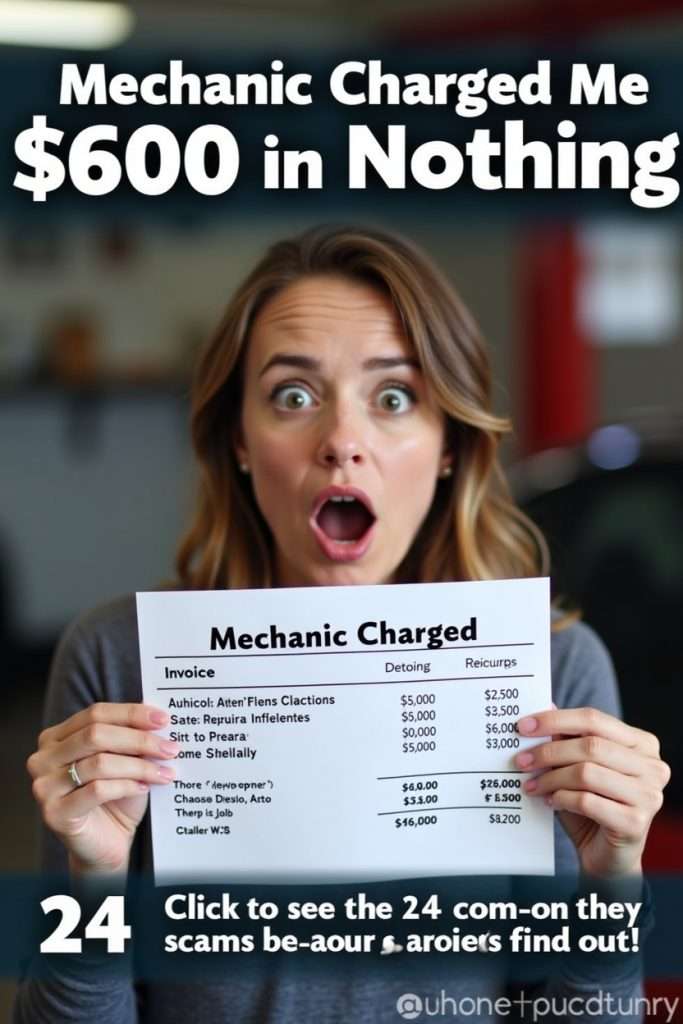
Scam number 2. The Premature-Battery Verdict.
A quick electronic load tester spits out “REPLACE,” and suddenly you owe $220 for a new battery. What they won’t mention: temperature, surface charge, and corrosion on the terminals all skew those readings. Before you authorize anything, have them perform a second load test after a 15-minute highway drive (which equalizes the charge) and insist they clean the posts first. A surprising number of “bad” batteries bounce right back once the terminals shine and the alternator tops them off.
Scam number 1. The “Dry-Rotted Tire” Scare.
Mechanics flash a tiny surface crack on the sidewall and claim your tires could “blow out any moment.” Light weather-checking is cosmetic on many three-to-five-year-old tires. What matters is tread depth (4/32″ is the real safety line in wet weather) and the DOT date stamp. If the tires are under six years old, show even wear, and still have tread to spare, those hairline cracks aren’t a ticking time bomb. Measure tread with a gauge, confirm the build date on the sidewall, and drive on—without handing over $600 for rubber you don’t yet need.
Now, here’s my number one rule to never get scammed: always get a second opinion. If a mechanic says you need a repair, ask for proof photos of the issue or the old parts they removed or need to repair, then check for their reviews. Shops with shady tactics crumble under accountability.
And that’s it. 24 Mechanic Scams Everyone Falls for. If this post saved you $100 or more, share it with a friend so they don’t get ripped off either. Watch our video here: 19 Things Never to Do in an Automatic Car.
Frequently Asked Questions (FAQ): Auto Repair Scams & What You Can Do
Is my mechanic scamming me?
If you ever leave a shop feeling confused, pressured, or like something didn’t add up you might’ve just been scammed.
Here’s how to spot it:
- They refuse to show you old parts.
- They tell you your car is unsafe to drive unless you fix something right now.
- They push vague charges like “shop fees” or “adjustments.”
- You’re quoted wildly different prices every time you visit.
Trust your gut. If you felt like something shady went down, it probably did. Keep records, get second opinions, and never approve repairs blindly.
How do I know if my mechanic is scamming me?
Here’s a quick checklist to confirm:
- Did they show proof of the problem, photos, error codes, or physical damage?
- Did they try to upsell services unrelated to why you came in?
- Did they say “only factory parts” are allowed when your warranty says otherwise?
- Did they lock your car in and refuse to return it unless you agreed to expensive repairs?
If your answer is yes to any of those? You’ve likely met a scammer in overalls.
How to avoid mechanic scams?
The #1 way to avoid scams? Always act like you already know.
Here’s the playbook:
- Do your homework before you show up. Google your issue, know your parts, and check your car’s service intervals.
- Mark your parts. Sharpie on filters or tires means you’ll know if they swapped it or just pretended.
- Ask to see everything. The old parts, the codes, the damage — if they can’t show it, don’t pay for it.
- Say, “I need to check with my mechanic.” Even if you don’t have one. It signals you’re not an easy target.
- Bring someone with you. Scammers prey on solo customers, especially women or the elderly.
How not to get scammed by a mechanic?
So this is how to not get scammed by a mechanic
Keep it simple. Here’s the street-smart rule:
Don’t say yes to anything without proof, a price breakdown, and time to think.
Even if they say, “It’s urgent,” you always have the right to leave, get a second opinion, or call another shop.
What do I do if a mechanic scams me?
If you were ripped off, you’re not powerless. Here’s how to fight back:
- Collect your evidence. Receipts, photos, and before/after pictures, if you have them.
- Call your bank or card company. If the charge was shady, they can reverse it.
- Leave detailed reviews online. Yelp, Google, Facebook, and wherever people search for that shop. Public exposure hurts scammers.
- Report them. (See the next question.)
Bonus: Some people have gone back and asked for partial refunds just by threatening to file complaints and post their proof.
how to file complaint against auto repair shop
Here’s the process that gets attention:
- File with your state’s consumer protection agency. Every U.S. state has one, just Google “Auto repair complaint + your state.”
- Submit a report to the Better Business Bureau (BBB).
- Contact the Federal Trade Commission (FTC) at reportfraud.ftc.gov.
- For dealership scams, file a complaint with your car manufacturer as well.
Tip: Complaints go further if you include receipts, names, dates, and photos.
They charged me way too much for something simple was that a scam?
Depends.
If they:
- Charged you $150 for a $20 air filter change that takes 2 minutes,
- Billed you for labor that never happened,
- Replaced something you didn’t agree to,
Then yes, that’s a scam disguised as “normal business.”
Call them out. Ask for a refund. And post that experience online — save the next person from getting suckered.
What if I’m just not sure whether the mechanic was honest?
That’s when a second opinion is golden.
Take your car to a different shop. Ask them to inspect what the first place claimed needed fixing. You’ll usually learn one of two things:
- It was totally unnecessary.
- It was cheaper or easier than what you were told.
Either way, you just saved yourself from walking back into the same trap.





